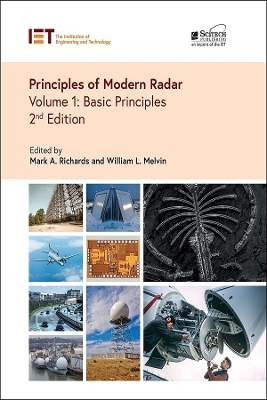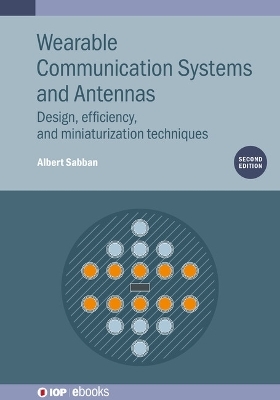
Practical Geolocation for Electronic Warfare Using MATLAB
Artech House Publishers (Verlag)
978-1-63081-888-3 (ISBN)
As a companion volume to the author’s previous book Emitter Detection and Geolocation for Electronic Warfare (Artech House, 2019), this book goes in depth on real-world complications that include: working within and converting between different coordinate systems, incorporation of prior information about targets, sensor uncertainties, the use of multiple snapshots over time, and estimating the current position and velocity of moving targets. The e-book version described here includes several links to software and videos that can be downloaded from the publicly available Git repository. The book also includes all MATLAB code necessary to develop novel algorithms that allow comparisons to classical techniques and enable you to account for errors in timing, position, velocity, or orientation of the sensors.
With its unique and updated coverage of detailed geolocation techniques and data, and easy linkable access to additional software and videos, this is a must-have book for engineers and electronic warfare practitioners who need the best information available on the development or employment of geolocation algorithms. It is also a useful teaching resource for faculty and students in engineering departments covering RF signal processing topics, as well as anyone interested in novel applications of SDR’s and UAVs.
Chapter 1 Introduction 1 1.1 Receiver Processing 1 1.2 Geolocation 2 1.2.1 Practical Considerations of Geolocation 3 1.3 Associated Software 9 1.3.1 MATLAB 9 1.3.2 Textbook Software 10 1.3.3 Python Software 10
Chapter 2 Review of Emitter Geolocation 13 2.1 Geolocation Measurements and Their Likelihood Functions 13 2.1.1 Likelihood Function for AoA Measurements 14 2.1.2 Likelihood Function for TDOA Measurements 16 2.1.3 Likelihood Function for FDOA Measurements 17 2.1.4 Likelihood Function for Hybrid Measurements 19 2.1.5 Generating Measurements and Likelihood Functions 20 2.2 Estimators 25 2.2.1 Maximum Likelihood Estimation 25 2.2.2 Maximum a Posterior Optimization 26 2.2.3 Convex Optimization 26 2.2.4 Least Square Estimators 27 2.2.5 Using Estimators for Geolocation 28 2.3 Other Geolocation Algorithms 31 2.4 Performance Measures 31 2.4.1 Root Mean Squared Error (RMSE) 31 2.4.2 Error Ellipse 32 2.4.3 Circular Error Probable (CEP) 32 2.4.4 Statistical Bounds 33 2.4.5 Statistical Bounds for Common Geolocation Data 36 2.4.6 Calculating CRLB for Geolocation Measurements 38 2.5 Discussion 39 2.6 Problem Set 41
Chapter 3 Sensor Selection 45 3.1 Measurement Sets 47 3.1.1 Full Measurement Set 47 3.1.2 Non-Redundant Set 48 3.2 Measurement Statistics of Sensor Pairs 49 3.2.1 Sensor Pair Cross-Covariance 50 3.2.2 Usage 51 3.2.3 Generating Measurements 54 3.2.4 Jacobian Matrix of Arbitrary Sensor Pairs 56 3.3 Performance Analysis 57 3.4 Problem Set 66
Chapter 4 Coordinate Systems 69 4.1 Local Coordinate Systems 69 4.1.1 Cartesian Coordinates 69 4.1.2 Spherical Coordinates 71 4.2 Global Coordinate Systems 73 4.2.1 Models of the Earth 73 4.2.2 Latitude and Longitude 77 4.2.3 Earth-Centered-Earth-Fixed (ECEF) 78 4.2.4 Earth-Centered Inertial (ECI) 78 4.3 Usage 79 4.3.1 Conversion between ECEF and LLA 80 4.3.2 Conversion between ENU and ECEF 81 4.3.3 ENU Adapted for Spherical Earth 83 4.3.4 Examples 84 4.4 Problem Set 89
Chapter 5 Geolocation with Target Constraints 93 5.1 Geolocation with Known Target Altitude 94 5.1.1 Optimization Problem Formulation 94 5.1.2 Solvers 96 5.1.3 Performance Analysis 105 5.2 Geolocation with Known Altitude Bounds 111 5.2.1 Optimization Problem Formulation 111 5.2.2 Solvers 112 5.2.3 Performance Analysis 117 Contents ix 5.3 Geolocation with Statistical Priors 117 5.3.1 Example Priors 119 5.3.2 Solving Geolocation with Priors 119 5.3.3 Performance Analysis 122 5.4 Problem Set 124
Chapter 6 Geolocation with Sensor Uncertainties 127 6.1 Formulation 127 6.1.1 Gradient of the Measurement Function with Sensor Uncertainties 132 6.1.2 Sensor Position Covariance 138 6.2 Approach 143 6.2.1 Required Observations 144 6.2.2 Maximum Likelihood 146 6.2.3 Iterative Solvers 151 6.3 Calibration Emitters 154 6.3.1 Measurement Bias Estimation 155 6.3.2 Sensor Position Error Estimation 157 6.3.3 Estimating Target Position 157 6.4 Other Solution Approaches 160 6.5 Performance Analysis 161 6.6 Problem Set 163
Chapter 7 Geolocation with Multiple Snapshots 167 7.1 Introduction 167 7.2 Convergence of Multiple Measurements 168 7.2.1 Measurement Space Solutions 172 7.2.2 State Space Solutions 176 7.3 Geolocation of a Stationary Target from Moving Sensors 182 7.3.1 Measurement Space Solutions 183 7.3.2 State Space Solutions 183 7.3.3 Complex Scenarios 186 7.3.4 Degenerate Geometries 188 7.4 Conclusion 190 7.5 Problem Set 190
Chapter 8 Geolocation of Moving Targets 193 8.1 Introduction 193 8.2 An Introduction to Tracking 193 8.2.1 Update Stage 194 8.2.2 Prediction Stage 196 8.2.3 Limitations 197 8.2.4 Coordinate Selection 197 x Contents 8.3 State Space Models 198 8.3.1 State Space Representation of Targets 198 8.3.2 Kinematic Models 198 8.3.3 Process Noise 201 8.3.4 Measurement Models 202 8.4 Advanced Tracking Concepts 212 8.5 Problem Set 216
Appendix A Derivation of the Fisher Information Matrix for Phase, Delay, and Doppler Estimation 221
| Erscheinungsdatum | 04.07.2022 |
|---|---|
| Verlagsort | Norwood |
| Sprache | englisch |
| Themenwelt | Technik ► Nachrichtentechnik |
| ISBN-10 | 1-63081-888-7 / 1630818887 |
| ISBN-13 | 978-1-63081-888-3 / 9781630818883 |
| Zustand | Neuware |
| Haben Sie eine Frage zum Produkt? |
aus dem Bereich


